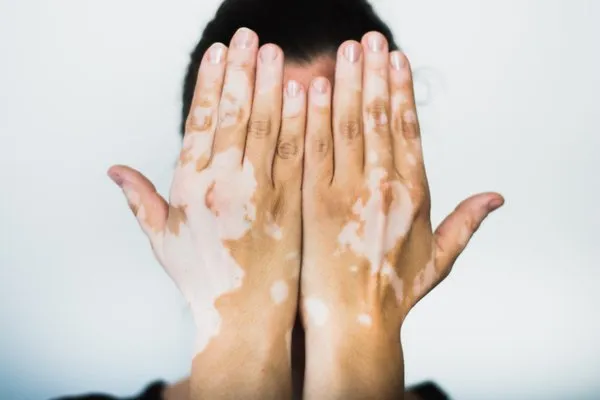On This Page
Introduction
Worldwide preponderance the most common stigmatizing dermatosis found is Vitiligo. Vitiligo is also known as Leucoderma, Achromoderma and Leukoderma.
It is the depigmentation disorder of the mucous and the skin which is a heritable, idiopathic, commonly acquired, and stressful disorder. This disorder significantly impacts the quality of life by creating social and emotional difficulties due to cosmetic imbalances in the body.
In Ayurveda, all disorders related to skin are mentioned under Kustha Roga but Vitiligo is not mentioned under major (Maha) or minor (Kshudra) Kustha. Leucoderma is separately mentioned in the Kustha chapter under the name Shwitra, Shweta Kustha, or Kilasa. This is because Kilasa or Shwitra have different causes, symptoms, pathogenesis, etc from the Kustha which makes it a distinct disorder.
Leucoderma occurs due to the vitiation of all three Dosha (Vata, Pitta, and Kapha) and along with this vitiation of three Dhatu i.e. blood tissue (Rakta Dhatu), muscle tissue (Mansa Dhatu) and adipose or fat tissue (Meda Dhatu). White patches on the skin or white discoloration of the skin are the cardinal symptoms of the disease
Here, we will find out the developing strategies for the prevention and treatment of Vitiligo (Leucoderma) by Ayurvedic treatment like Panchakarma Procedures (internal purification of the body), Yoga procedures, Single Herbs, Diet and Lifestyle modification, etc. The treatment helps in balancing the vitiated Tridosha, and the above-mentioned three Dhatu which will certainly help to treat leucoderma.
Are Leucoderma and Vitiligo the Same or Different Diseases?
Leuco means white or Derma means skin, so leukoderma is the general term used for skin depigmentation, and it includes different types of hypopigmentation disorder. Vitiligo is an autoimmune disorder and specific type of leucoderma in which the body self-destruct the pigment cells (Melanocytes). Leukoderma can be sudden or gradual while vitiligo is a gradual but progressive disorder with well defined white patches.
What is Vitiligo (Leucoderma)?
A natural pigment melanin which is responsible for giving color to the skin, hair, and eyes is formed by the cells (melanocytes) present in the basal layer of the epidermis. In leucoderma these pigment-producing cells i.e., melanocytes are either destroyed or stop functioning, which results in depigmented areas on the skin, leading to white patches.
So we can say that autoimmune conditions in which white patches are present on the skin usually without pain or itching are known as leukoderma. It is also known as Vitiligo or Achromoderma.
Vitiligo (Leucoderma) – As Per Ayurveda
In Ayurveda Leucoderma also known as vitiligo is considered the Tridoshaja Vyadhi and is known as Shwitra or Kilasa or Shweta Kustha. As per Ayurveda in the disease leucoderma, vitiation of three Dhatu i.e. blood tissue (Rakta Dhatu), muscle tissue (Mansa Dhatu), and adipose or fat tissue (Meda Dhatu) plays a major role in the manifestation.
In Shwitra Roga disturbance of digestive fire (Agni) along with vitiation of sub-type of Pitta i.e. Bhrajaka Pitta occurs which results in accumulation of toxin (Ama) and improper metabolism. Due to this loss of skin pigmentation occurs which results in white patches on skin which are cardinal symptoms of Vitiligo.
Who Gets Affected by Vitiligo (Leucoderma)?
Vitiligo (Leucoderma) is more commonly noticed in childhood, adolescence, or early adulthood. Recent studies suggest that leukoderma prevalence is higher in females as compared to males. Individuals with a family history of leukoderma are at high risk of having these diseases.
As leukoderma has an autoimmune component i.e. body’s immune system targets the pigment cells melanocytes therefore people with disorders like thyroid diseases, type-1 diabetes, and rheumatoid arthritis like autoimmune disorders are more prone to Leukoderma. An individual with nutritional deficiency or an individual who is exposed to certain chemicals and stress can trigger the predisposed individual of leukoderma.
How Common is Vitiligo (Leucoderma)?
According to an observational study of leucoderma, globally leukoderma affects approximately 1- 2% of the population. In the United States, approximately 40% of cases of adult leukoderma remain undiagnosed even after the prevalence of vitiligo is approximately 0.76 to 1.11%.
A recent survey revealed that India is considered to have the highest prevalence throughout the world. In India, vitiligo may start at a younger age and its prevalence ranges from 0.255 to 4 %. The prevalence is specifically more in the states of Rajasthan and Gujrat of India approximately 8.8 %.
In leucoderma, family history affects the prevalence of leukoderma, and prevalence in such people with genetic predisposition is high ranging from 7.7% to more than 50%.
Types of Vitiligo (Leucoderma)
Vitiligo (Leucoderma) is mainly classified into two types:
- Congenital Leukoderma: The leukoderma that is present due to developmental defects and genetic mutations from birth.
- Acquired Leukoderma: The leukoderma that develops due to various factors like autoimmunity, chemical exposures, infections, etc. It is further divided into various subtypes:-
I) Vitiligo: Destructions of melanocytes due to autoimmunity are known as Vitiligo. Vitiligo is further divided into subtypes:-
- Segmental Vitiligo – The vitiligo that affects only one side of the body, or we can say that unilateral patches are present in segmental vitiligo.
- Non-Segmental Vitiligo – Symmetrical and bilateral patches are present in the non-segmental vitiligo.
- Universal Vitiligo – The vitiligo in which widespread depigmentation is present is known as universal vitiligo.
II) Occupational Leukoderma: Occupational leukoderma occurs due to exposure to various catechols found in plastic, cosmetics, and rubber, and due to various chemicals like phenols, etc.
III) Drug-Induced Leukoderma: Prolonged use of certain medications such as antimalarial drugs and steroids may also result in leucoderma which is known as drug-induced leukoderma.
IV) Post-Inflammatory Leukoderma: After suffering from certain inflammatory skin diseases like psoriasis, eczema, infections, burns, etc. leucoderma occurs then such leukoderma is known as post-inflammatory leukoderma.
V) Hansen’s Disease (Leprosy) induced Leukoderma: Due to Mycobacterium leprae infection hypopigmented patches occur then such leukoderma is known as Hansen’s disease (Leprosy) induced leukoderma.
VI) Idiopathic Guttate Hypomelanosis: Due to aging, in older individuals sometimes small hypopigmented macules are seen.
Types of Vitiligo (Leucoderma) – As Per Ayurveda
In Ayurveda leucoderma (Shwitra / Kilasa) has the following types:-
1. According to Origination (Uttapati)
- Congenital (Sahaj Kilasa)
- Acquired (Jattotara Kilasa)
2. According to Dosha
- Vataja
- Pittaja
- Kaphaja
3. According to Tissues (Dhatu) Involved
- Daruna – In Blood tissue (Rakta Dhatugata)
- Aruna – In Muscle tissue (Mansa Dhatugata)
- Shwitra – In Fat tissue (Meda Dhatugata)
4. According to Etymology (Nidana)
- Agni Dagdha
- Anagnidagdha
5. According to the Distribution of Patches
- Ekadeshaja: Patches found at one part of the body (Ekanga)
- Sarvadeshaja: Patches found different parts of the body (Sarvanga)
6. According to the Prognosis (Sadhya-Asadhyata)
- Sadhya Kilasa (Curable)
- Asadhya Kilasa (Non-curable)
Causes of Vitiligo (Leucoderma)
- Genetic factors: Most of the patients with vitiligo or leukoderma have a family history.
- Auto-immune cause: Mainly in vitiligo, autoimmune diseases like Grave’s disease, diabetes, thyroiditis, pernicious anemia, etc. are often associated.
- Exposure to chemicals like phenols, and catechols like adhesives, hair dyes, etc. damage melanocytes and triggers depigmentation.
- Skin trauma with conditions like sunburn, etc also triggers leukoderma.
- Melanocytes can also be affected by dysfunction of the nervous system.
- Increased oxidative stress
- Nutritional deficiencies of folic acid, Vitamin 12, zinc, and copper also result in impairment of melanin production and thus contribute to leukoderma.
- Various fungal infections like Hansen’s disease or tinea versicolor can cause leukoderma.
- Chronic skin disorders like psoriasis and lichen planus can cause depigmentation after healing resulting in leukoderma.
Causes of Vitiligo (Leucoderma) – As Per Ayurveda
- Prenatal cause (Garbhaja nidana) i.e. consumption of excessive Kapha aggravating food by pregnant lady (Garbhini Stree) causing Shwitra / Kilasa to the baby.
- Incompatible diet (Virodhi Cha Annam)
- Excessive intake of sour and salty food (Amla and Lavana Rasa)
- Excessive intake of alcohol (Madya)
- Intake of food after heavy exercise or indigestion
- Suppression of urges specifically vomiting (Chardi)
- Daytime sleeping (Divaswapan)
- Night awakening (Ratri Jagaran)
- Improper administration of detoxification therapy (Panchkarma)
- Telling lie (Vachansi Atathyani)
- Indebtedness (Kritaghna Bhava)
- Use of cold water suddenly after coming from the sun
- Insulting to divine sole (Suranam Ninda)
- Disobedience to teachers (Guru-Dharshanam)
- Sinful acts (Papa –Kriya)
- Sinful acts of previous Birth (Purva Kritam Cha Karma)
Symptoms of Vitiligo (Leucoderma) – As Per Ayurveda
General Premonitory Symptoms (Purvaroopa) of Leucoderma (Shwitra)
- Loss of touch sensation (Sparsha-Agytvam)
- Excessive sweating/ absence of sweating (Sweda-Asweda)
- Horripilation (Lomharsha)
- Burning sensation (Daha)
- Numbness (Suptangta)
- Itching (Kandu)
- Smoothness (Atishlakshna)
- Roughness (Kharasparsha)
- Blackish discoloration of blood (Asrijah Kashranya)
- Piercing pain (Toda)
- Colour change (Vaivarnya)
- Rashes (Kotha)
- Physical fatigue (Shrama)
- Mental Fatigue (Klama)
- Early manifestation along with chronicity (Shigrotpattischirsthic)
- Dryness (Rukshta)
Main Symptoms (Purvaroopa) of Leucoderma (Shwitra / Kilasa)
- The color of the patches in Shweta kilasa is white, in Tamra Kilasa color of the patches is coppery and in Aruna Kilasa color of the patches is red.
- Exudate (Paristravi)
- Sadaham (burning sensation) specifically in Pittaja Kilasa
- Itchy (Sakandu)
- Loss of hair follicle (Romadhvansi) in Pitaja Kilasa
- Snigdha (Unctuousness) or Non- Unctuousness (Rukshta) specifically in Kaphaja and vataja Kilasa respectively.
- Thick patches (Behal) in Kaphaja Kilasa
Ayurvedic Reference of Vitiligo (Shwitra Kushta)
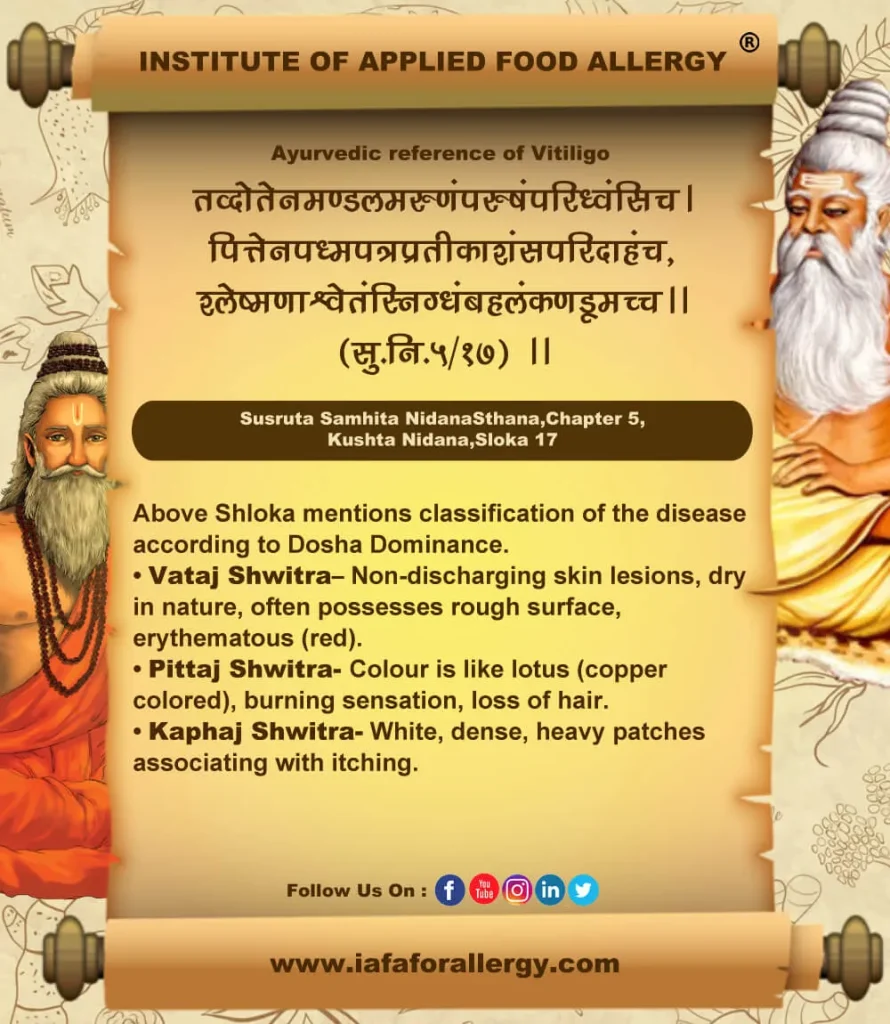
Diagnosis of Vitiligo (Leucoderma) – As Per Ayurveda
The diagnosis of Vitiligo (Leucoderma) is based on five diagnostic tools (Nidana Panchaka), in which various question is asked to individuals (History taking) like whether they take incompatible food (Viruddha Aahara), excessive intake of pungent, sour, salty foods (Katu, Amla, Lavana rasa), family history of leukoderma, prodromal symptoms are checked (Physical examination) like hypopigmented patches, tingling sensation in affected area, etc.
Therapeutic tests (Upashaya and Anupshaya) are performed by giving Pitta Vardhak Ahara for aggravation of symptoms and bitter astringent herbs (Tikta, Kashaya Dravya) will improve the symptoms. Along with this from the modern side Wood’s lamp examination, dermoscopy, HLA typing, and Anti-melanocytes antibodies are checked.
Prognosis of Vitiligo (Leucoderma)
As per Ayurveda leucoderma (Shwitra) is divided into curable and non-curable Shwitra according to the symptoms involved. The Curable Leucoderma (Shwitra) has below-mentioned symptoms:-
- Normal hair colour (Arakta Loma)
- Pale colored patches (Pandu)
- Presence of swelling in the center of the patch (Madhya Avakasho Shoonam)
- Thin or light-colored lesions (Tanu)
- Not chronic (Natichir Utthanam)
- Lesions are not large (Abhehalm)
- Freshly manifest (Avarshati Krantha)
- Patches are not combined (Mithya Samsrista/ Paraspara Animilitha)
- Not due to burn (Anagni Dagdha)
The Non-Curable Leucoderma (Shwitra) has the below-mentioned symptoms:-
- Patches not separated from one another (Sambadha Mandala)
- Hair have turned red (Rakta Loma)
- Patches form due to burn (Agni Dagdha)
- Patches that are so close to each other that they appear as a single big lesion (Parspara Abhinna)
- Large lesion (Bahu)
- Existing for more than 1 year (Varsha Ganotpanna)
- Present in the Genital area (Guhya), Hands (Pani), Feet (Tala), Lips (Oshtha)

“All white patches which look like Vitiligo is a great misconception. The main aim of an intuitive practitioner is to reach the accurate diagnosis first before seeking any medical aid.”
Remarkable medicine. Remarkable care!!! Dr. Gupta’s IAFA for your healthy future!!
– Dr. Sahil Gupta (B.A.M.S., M.H.A.)
Ayurvedic Allergy Specialist
CEO & Founder of IAFA®
At last, Easier Vitiligo Management

Trusted by
More than 90,000 Patients

Convenient
at-Home Treatments

9.2 / 10
Customer Satisfaction Score
Leucoderma (Vitiligo) Ayurvedic Treatment
The Leucoderma (Vitiligo) Ayurvedic Treatment mainly focuses on balancing the Dosha mainly Vata, Pitta, and Kapha, and also restoring the balance of three Dhatu i.e. blood tissue (Rakta Dhatu), muscle tissue (Mansa Dhatu), and adipose or fat tissue (Meda Dhatu) through Shodhana (purificatory), Shamana (palliative), dietary regulation (Pathya- Apathya), lifestyle modification, etc.
We at IAFA Ayurveda provide effective purificatory and palliative therapies for Vitiligo (Leucoderma) treatment in Ayurveda. Dr. Gupta’s IAFA is the perfect destination for treating Leucoderma as well as other types of skin disorders. Leukoderma is a chronic disorder that is time-consuming and requires treatment for a longer period. The Ayurvedic approach that is used to treat Vitiligo (Leucoderma) is as follows:
Detoxification Therapy (Shodhana Therapy) for Vitiligo (Leucoderma)
- Oleation Therapy (Snehana Karma): Oleation therapy is given to patients before any procedure to prepare the body for detox either it is purgation or emetic therapy it helps loosen toxins (Ama) and helps to nourish blood tissue and muscle tissue. For this various medicated Ghrita like Bakuchi Ghrita, Mahatikta Ghrita, etc are used.
- Massage Therapy (Abhyanga): For promoting melanin production and for purification of the skin various medicated oils are used to massage (Abhaynga) like Bakuchi Taikla, Karanja Taila, etc.
- Emetic Therapy (Vamana): If Shwitra Roga (Leucoderma) is associated with Kapha dominance in patients then, controlled therapeutic vomiting is done. It helps in reducing autoimmune reactions, removes Kapha Dosha in the body and also helps in improving pigment production and skin metabolism.
- Purgative Therapy (Virechna): Therapeutic purgation is a key therapy in leukoderma patients in which with the help of various herbs excessive Pitta toxins are removed, melanin production is improved, oxidative stress is reduced, and gut health is enhanced.
- Bloodletting Therapy (Rakta Mokshana): With the use of various techniques like leech therapy (Jaloka Avacharana), the removal of impure blood is done from the body in bloodletting therapy. Rakta Mokshana (Blood letting therapy) reduces toxicity and directly helps in the purification of blood. Along with this it improves microcirculation in affected areas and removes the autoimmune antibodies which attack the melanocytes of the body.
- Medicated Enema Therapy (Basti): In this process, medicated oil or decoctions are administered through the rectum. This procedure helps in removing Vata and Pitta toxins, balances autoimmune response, and prevents the recurrence of leucoderma.
- Dry Powder Massage (Udvartana): A massage of dry herbal powder is done in this procedure which stimulates skin rejuvenation by removing dead skin cells and by opening blocked skin pores.
- Medicated Buttermilk Therapy (Takra Dhara): In this therapy, continuous medicated buttermilk (Takra) is poured over the head for a certain period. It helps in balancing excessive vitiated Pitta in the body, reduces the major trigger of vitiligo i.e. stress, and enhances the soothing and cooling effect.
Herbs for Vitiligo (Leucoderma)
Herbs for Ayurvedic Treatment of Vitiligo (Leucoderma – White Patches) includes Ginkgo biloba, Muskmelon (Cucumis melo), Kutki (Picrorhiza kurroa), polyphenols of Green Tea, Capsaicin active ingredient of Chilli peppers, Haridra (Curcuma longa), Bakuchi (Psoralea corylifolia), Neem (Azadirachta indica), Guduchi (Tinospora cordifolia), Manjistha (Rubia cordifolia), Kalmegh (Andrographis paniculata), Khadir (Acacia catechu), Haritaki (Terminalia chebula), Karanja (Pongamia pinnata), Chirayata (Swertia chirata), Vidanga (Embelia ribes), etc.
These herbs possess various active ingredients like Picroside, Capsaicin, Psoralen, Curcumin, Alizarin, Tinosporin, Catechins, Tannins, Ascorbic acid, etc which exhibit antioxidant, anti-inflammatory, blood detoxifier, balance autoimmunity, Pitta, Kapha and Vata Pacifying properties, which improves melanocytes function, reduce oxidative stress in skin cells, promote melanogenesis and collagen health, reduce scaling, blood purifying, etc. which makes them ideal herbs for treating Vitiligo or Leucoderma.
Gem Therapy for Vitiligo (Leucoderma)
Few stones are recommended to wear in Vitiligo (Leucoderma) as per Vedic Astrology. These stones can be worn after proper consultation with an astrologer as per your birth date, Zodiac sign, etc. to get only benefits.
As per Astrology, Opal or White Zircon, Emerald (Panna), Red coral (Moonga), and Blue Sapphire (Neelam) can be worn as per your natal chart if you are suffering from Vitiligo.
These stones help in balancing the Dosha of the body, improve blood circulation, help in skin regeneration and pigmentation, promote melanocyte health, calm the mind, reduce stress, improve immunity, etc.
Diet and Lifestyle Guidance (Pathya-Apathya) for Vitiligo (Leucoderma)
According to Ayurveda, if your diet is correct then medicine is of no use because a good gut is considered as the basis of a healthy individual. So, by giving attention to our daily diet, we not only get relief from the diseases from which we suffer but also avoid the upcoming diseases. Below we mention some dietary and lifestyle guidelines that one can follow for Vitiligo (Leucoderma):-
What to Do (Pathya) in Vitiligo (Leucoderma)?
- Take bitter and astringent (Tikta, Kashaya Rasa) and taste food like Karela (Momordica charantia), Methi (Fenugreek), Patola (Trichosanthes dioxide), etc.
- Food that is Pitta pacifying like turmeric, Triphala, black sesame seeds, etc should be taken.
- One should have dinner and sleep at the appropriate time (Ratricharya)
- Regular consumption of buttermilk (Takra)
- Daily exposure to sunlight for 5- 15 minutes for melanin activation.
- Regular detoxification of the body (Panchkarma)
- Light food that is easy to digest should be taken (Laghu Aahara)
- Yoga, meditation, and exercise should be done regularly
What to Avoid (Apathya) in Vitiligo (Leucoderma)?
- Avoid heavy meals (Guru Bhojana)
- Avoid incompatible food (Virrudha Aahara) as it results in toxin formation
- Pitta Aggravating food i.e. Intake of sour (Amla), fermented food, and salty (Lavana) food should be avoided like excessive pickles, vinegar, curd, etc.
- Fish, meat, sesame (Tila), and Jaggery (Guda) should be avoided
- Excessive milk products should be avoided
- Red meat should be avoided
- Alcohol and smoking should be avoided.
- Anger and anxiety (Krodha and Shoka) should be avoided.
- Suppression of natural urges (Vega Dharana)
- Excessive exposure to chemicals like harsh soap, hair dyes, detergents, etc should be avoided.
Yoga Asanas for Vitiligo (Leucoderma)
Various Yoga Asanas like Tree pose (Vrikshasana), Cobra pose (Bhujangasana), Bow pose (Dhanurasana), Triangle pose (Trikonasana), Seated forward bend (Paschimottanasana), Deep breathing technique (Pranayama) like Alternate nostril breathing (Anuloma-Viloma), Bellow breaths (Bhastrika Pranayama), Skull shining breath (Kapal Bhati), Meditation, etc. can be used in Leucoderma or Vitiligo.
These Yogic Asanas improve blood circulation, relieve stress, enhance skin health, improve metabolism, detoxification, etc., and also help in balancing all three Dosha, and improve immunity.
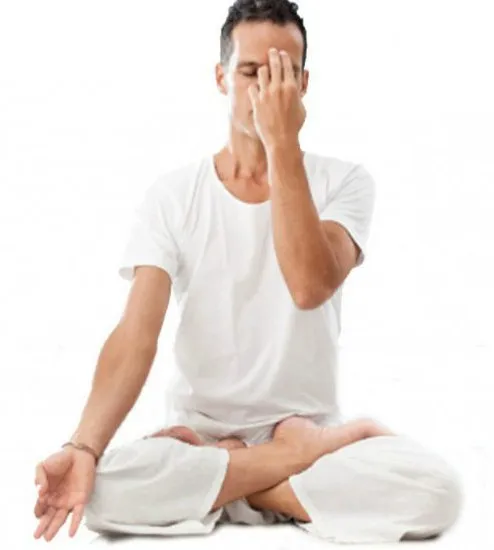
Frequently Asked Questions
Question: How to Get Rid of Vitiligo Permanently?
Answer: The permanent cure for vitiligo depends upon the early diagnosis and consistency in treatment. If a patient takes Ayurvedic treatment, follows an Ayurvedic diet, and follows the lifestyle changes as advised by a consultant then one can get rid of vitiligo permanently.
Question: How to Cure Vitiligo Permanently?
Answer: By detoxification therapy (Panchkarma), the use of herbs, proper follow of dos and don’ts (Pathya and Apathya), Yoga, meditation, and with the help of gem therapy one can stop the progression of vitiligo, regain pigmentation, and cure vitiligo permanently.
Question: How to Use Neem Oil for Vitiligo?
Answer: Pure Neem oil along with other pigmentation-enhancing oils like Bakuchi oil can be used to stop depigmentation.
Question: How to Use Aloe Vera for Vitiligo?
Answer: Fresh aloe vera gel can be directly applied over the affected area or aloe vera juice can be taken orally which will help in reducing inflammation, and promote pigmentation.
Question: How to Use Haritaki for Vitiligo?
Answer: Approximately 3-6 grams of powder of Haritaki can be taken with lukewarm water at night for better digestion and blood purification which helps in preventing the progression of vitiligo.
Question: Can Vitiligo Be Cured Permanently?
Answer: Yes, with early diagnosis and proper Ayurvedic treatment if it has curable prognosis symptoms then can be cured permanently.
References
- Singh, Dr & Rathi, Renu & Rathi, Bharat. (2022). Ayurvedic Management of Shwitra – A Case Report. Journal of Evolution of Medical and Dental Sciences. 11. 525- 527. 10. 14260/ jemds/ 2022/ 105.
- Grimes PE. Vitiligo: Pathogenesis, clinical features, and diagnosis. https:// www. uptodate. Com/ contents/ vitiligo pathogenesis- clinical- features- and- diagnosis.
- Martis J, Bhat R, Nandakishore B, Shetty JN. A clinical study of vitiligo. Indian J Dermatol Venereol Leprol. 2002; 68: 92.
- Priyanka, Verma & Lahange, Sandeep & Saurabh, Jain & Dushyant, Sharma. (2021). EVALUATION OF THE TREATMENT OF SHWITRA WITH AYURVEDA MODALITIES: A CASE STUDY. International Journal of Ayurveda and Pharma Research. 8-10. 10. 47070/ ijapr. v9i1. 1764.
- Jangir, Raj & Jangir, Jyoti. (2024). Ayurvedic Management of Shwitra (Vitiligo). International Journal of Ayurveda and Pharma Research. 54- 58. 10. 47070/ ijapr. v12i11. 3432.
- Joge RR, Kathane PU, Joshi SH. Vitiligo: A Narrative Review. Cureus. 2022 Sep 18; 14 (9): e29307. doi: 10. 7759/ cureus. 29307. PMID: 36304341; PMCID: PMC- 9586189.
- Imran, M., R., V., & Mohammed, Y. (2023). Vitiligo: A Review of Aetiology, Pathogenesis, Treatment, and Psychosocial Impact. Cosmetics, 10 (3), 84.
- Viktoria Eleftheriadou, Carine Delattre, Shala Chetty-Mhlanga, Christopher Lee, Laura Girardat-Rotar, Iftekhar Khan, Amit Mathew, Andrew R Thompson, Burden of disease and treatment patterns in patients with vitiligo: findings from a national longitudinal retrospective study in the UK, British Journal of Dermatology, Volume 191, Issue 2, August 2024, Pages 216– 224.
Seek Expert Advice
Dr. Gupta’s IAFA is a pioneering center in the Ayurvedic management of various diseases including Vitiligo (Leucoderma). IAFA ensures good results and relief to all suffering from the distressing effects of Vitiligo (Leucoderma).
Visit IAFA and Feel the True Sense of Health through Ayurveda!!! For Personalized Treatment of Vitiligo (Leucoderma), Book Your Appointment Now!!!
Was this Page Helpful?
So, IAFA’s Root-Cause Treatment of Vitiligo is Just 3 Steps Away!

01. Connect With Us
Share your history of illness or Book your appointment

02. Consult With Us
Dr. Gupta a certified Ayurvedic Allergist Consultant

03. Root Cause Treatment
Get an accurate diagnosis, medicines, diet & lifestyle change
Real Case Studies – Successfully Treated Patients
Real Case Studies of Successfully Treated Patients from All Around the World by IAFA Ayurveda®

5-Year-Old Shih Apso Dog Recovered from Canine Peripheral Neuropathy – A Case Study
This case study presents a 5-year-old Shih Tzu-Lhasa Apso crossbreed dog (pet)…

9 Year Old Female Patient Recovered from Chronic Allergic Bronchitis – A Case Study
This case study presents a 9-year-old female patient who has successfully recovered…
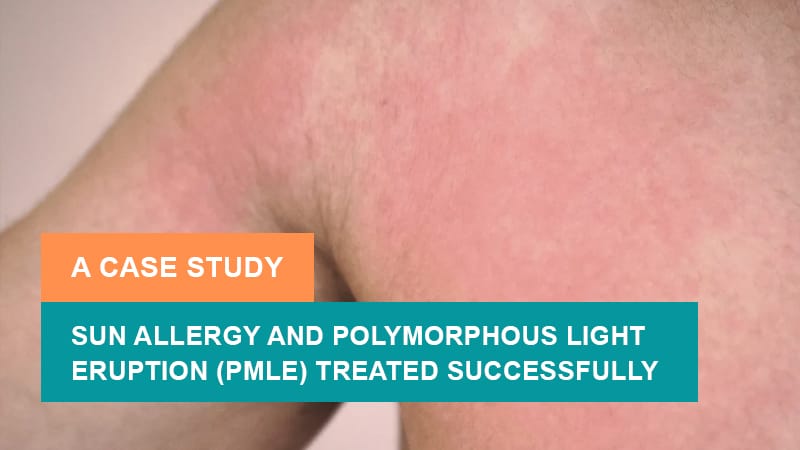
12-Year-Old Child Recovered from Sun Allergy and Polymorphous Light Eruption (PMLE) – A Case Study
This is a case study of a 12-year-old child who has successfully…

40-Year-Old Female Patient Recovered from Dyshidrotic Eczema and Onychomycosis – A Case Study
This case study highlights the successful recovery of a 40-year-old female patient…
Read More Articles
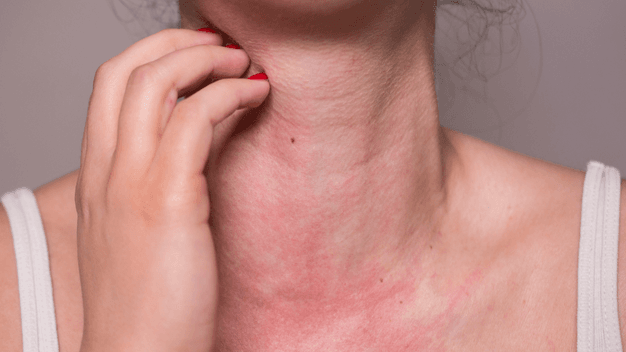
Polymorphous Light Eruption (PMLE)
Discover Ayurvedic treatment for Polymorphous Light Eruption (PMLE). Learn about its causes,…
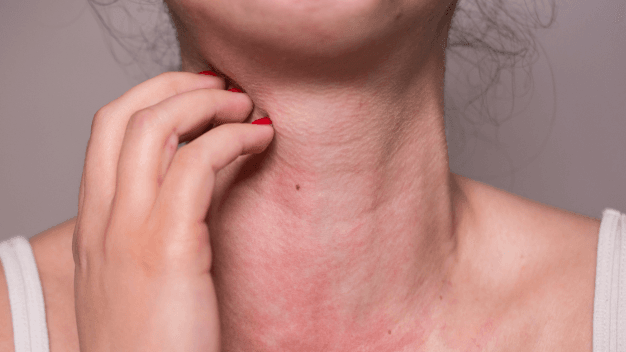
Mast Cell Diseases
Discover Ayurvedic treatment for Mast Cell Diseases, including types, causes, symptoms, and…

High Immunoglobulin-E (IgE) Levels
Discover Ayurvedic treatment for high Immunoglobulin-E (IgE) levels. Learn about the causes,…

